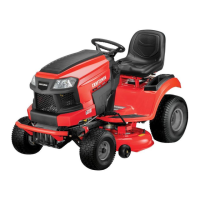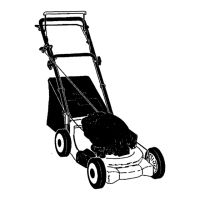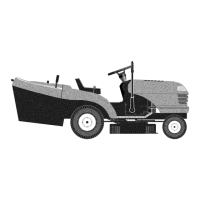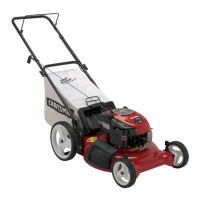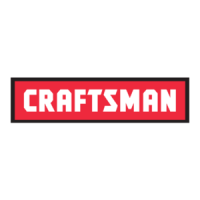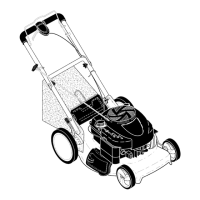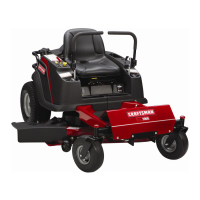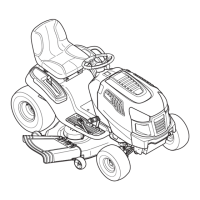ENGLISH
11
29
Fig.K
30
28
27
26
24
Fig.L
28
23
25
24
Blade Sharpening
KEEP BLADE SHARP FOR BEST MOWER PERFORMANCE. A
DULL BLADE DOES NOT CUT GRASSCLEANLY.
WARNING: Use gloves and proper eye protection
while removing, sharpening, and installing blade.
Ensure that safety key and battery pack are removed.
Sharpening the blade twice during a mowing season is
usually sufficient under normal circumstances. Sand causes
the blade to dull quickly. If your lawn has sandy soil, more
frequent sharpening may berequired. REPLACE BENT OR
DAMAGED BLADEIMMEDIATELY.
When Sharpening the Blade
• Make sure blade remainsbalanced.
• Sharpen blade at the original cuttingangle.
• Sharpen cutting edges on both ends of blade, removing
equal amounts of material from bothends.
To Sharpen Blade in a Vise (Fig. M)
1. Be sure the bail handle is released, the blade has
stopped and safety key and battery pack are removed
before removing theblade.
2. Remove blade from mower. See instructions for
Removing and InstallingBlade.
3. Secure blade
28
in a vise
31
.
4. Wear proper eye protection and gloves and be careful
not to cutyourself.
5. Carefully file the cutting edges of the blade with a fine
tooth file
32
or sharpening stone, maintaining the
angle of the original cuttingedge.
6. Check balance of blade. See instructions for
BladeBalancing.
7. Replace blade on mower and tightensecurely.
Fig. M
31
28
32
Blade Balancing (Fig. N)
Check balance of the blade
28
by placing center hole in
the blade over a nail or round screwdriver
33
, clamped
horizontally in a vise
31
. If either end of the blade rotates
downward, file along the sharp edge of that dropping end.
Blade is properly balanced when neither enddrops.
Fig. N
28
31
33
Lubrication
No lubrication is necessary. Do not oil the wheels. They have
plastic bearing surfaces which require nolubrication.
Cleaning (Fig. A)
WARNING: Blow dirt and dust out of all air vents
with clean, dry air at least once a week. To minimize
the risk of eye injury, always use ANSI Z87.1 (CAN/
CSA Z94.3) approved eye protection and NIOSH/
OSHA/MSHA approved respiratory protection when
performingthisprocedure.
WARNING: Never use solvents or other harsh
chemicals for cleaning the non-metallic parts of
the tool. These chemicals may weaken the plastic
materials used in these parts. Use a cloth dampened
only with water and mild soap. Never let any liquid
get inside the tool; never immerse any part of the tool
into aliquid.

